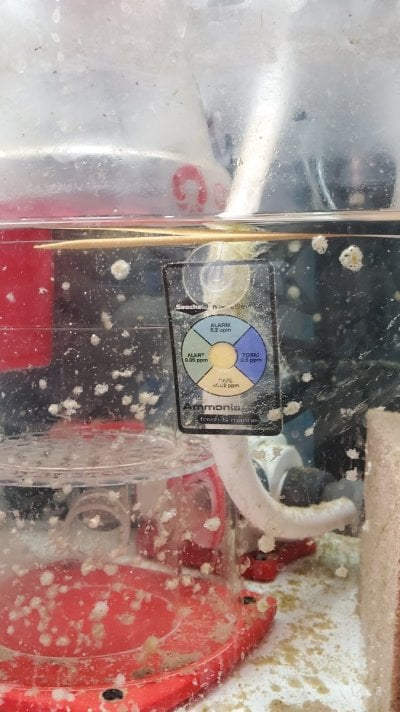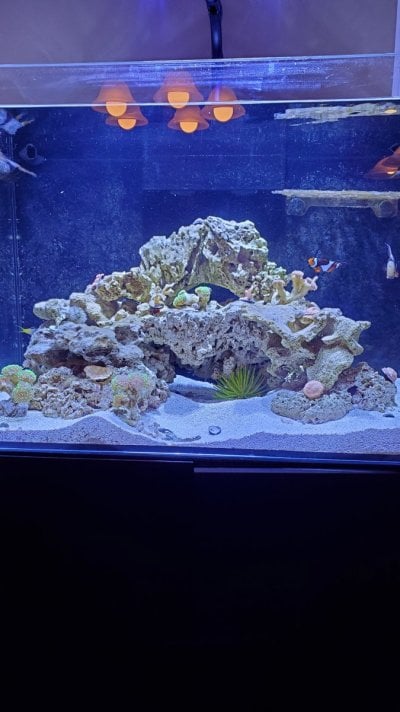My tank is going on a year old now. Havent checked ammonia since I cycled it, but did put in a seachem badge in the sump just to keep an eye on it. It has always been yellow, never seemed to change. I went to my LFS to let them do a water test, they have a spin disk and I just like to double check my tests against theirs. It showed my ammonia was .4. Came home and tested it again, I have a salifert kit, and it showed about .25. I dont over feed, only a few fish and small cuc. I tested my salt mix barrel and it showed about the same, about .25. Checked my ro barrel and it showed 0. I use IO reef crystals. I got a bag of just IO salt just to see if it would also mix up with ammonia. I mixed a 2 buckets of both just to see if maybe my salt barrel might be the problem but they both had ammonia after I mixed them.
Right now everything looks good in the tank, my ammonia hasnt really dropped, nitrite is 0, Nitrate 0, Phos. .02.
Could my RO/Di have some type of reaction after mixing, raising the ammonia?
Should I contuine using IO?
Right now everything looks good in the tank, my ammonia hasnt really dropped, nitrite is 0, Nitrate 0, Phos. .02.
Could my RO/Di have some type of reaction after mixing, raising the ammonia?
Should I contuine using IO?


















